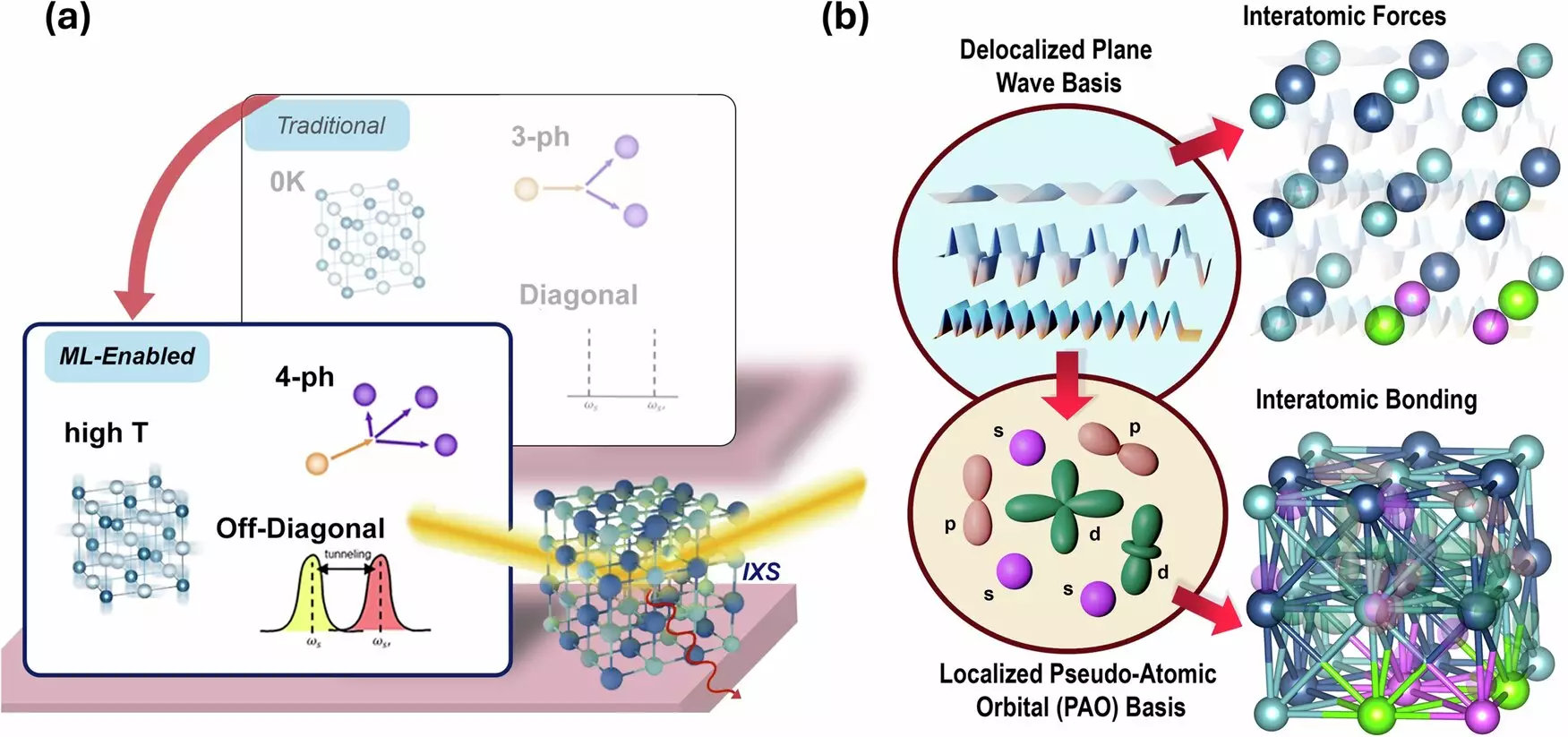In the realm of material science, particularly within thermoelectric energy conversion, the behavior of various materials under different conditions is of paramount interest. One such material that has garnered attention is germanium telluride (GeTe). Researchers from Cornell University, led by associate professor Zhiting Tian, have shed new light on a puzzling behavior observed in GeTe—an unexpected increase in lattice thermal conductivity with rising temperature, a phenomenon that has intrigued scientists for years. This exploration not only addresses the specific case of GeTe but also contributes significantly to the broader understanding of thermal transport in phase-change materials.
The relationship between temperature and thermal conductivity in materials, especially in phase-change materials, is complex. While it is relatively simple to observe that a specific attribute exists—as seen with GeTe’s cubic phase—pinpointing the underlying reasons for such behavior requires intricate investigative approaches. The Cornell team undertook this challenge by employing machine learning and advanced X-ray techniques, marking a significant stride in the material science field.
The realization that GeTe exhibits increasing thermal conductivity at elevated temperatures defies conventional expectations, as one would generally anticipate conductivity to diminish as thermal agitation increases. The research’s findings revealed that the strength of the bonds between second-nearest neighbor atoms in the material significantly increases as the temperature rises. Specifically, the Ge-Ge bond strength shows an increase of 8.3%, while Te-Te bonds demonstrate a staggering 103% enhancement between the temperatures of 693 Kelvin and 850 Kelvin.
A distinctive aspect of the Cornell researchers’ approach lies in their application of machine learning to process and analyze data efficiently. Previous attempts to assess the impacts of temperature and higher-order scattering on thermal conductivity were hampered by computational limitations. However, by integrating machine learning—a technique that enhances the speed and accuracy of simulations—the team could examine multiple variables simultaneously, including temperature dependence and phonon scattering.
Incorporating a method borrowed from chemistry, the researchers performed rigorous bonding analysis, correlating their computational results with experimental data obtained through X-ray scattering measurements. This dual approach enabled a robust validation of their findings, reinforcing the conclusion that stronger second-nearest neighbor bonds are integral to GeTe’s thermal conductivity behavior.
Thermodynamic Implications for Energy Conversion
The implications of these discoveries extend beyond basic science. Phase-change materials, due to their tunable properties, are pivotal in a variety of optical and electronic applications. GeTe, in particular, is positioned as a promising alternative to lead telluride—the traditional thermoelectric material—because of lead’s environmental and health hazards. As an energy-efficient material, GeTe could play a crucial role in future thermoelectric applications, potentially harnessing waste heat for energy conversion and shaping sustainable technologies.
Moreover, the study’s findings are paving the way for not only GeTe but also related materials, such as tin-telluride and tin-selenide, which exhibit similar thermal conductivity behaviors. By understanding and modeling these materials better, researchers can design more efficient thermoelectric devices, thus contributing to sustainable energy solutions.
The work conducted by the Cornell team is a testament to the power of interdisciplinary collaboration—merging computational methodologies with experimental findings to unravel complex material behaviors. By elucidating the mechanisms behind the thermal conductivity of GeTe, this research opens the door to further exploration of phase-change materials, potentially leading to technological breakthroughs in sustainable energy systems.
Through ongoing investigations into the thermodynamic properties of these materials, researchers hold the promise of advancing material science while addressing pressing global energy challenges. The study of GeTe stands as a significant milestone in this journey, exemplifying how innovative research can contribute to a sustainable future.

